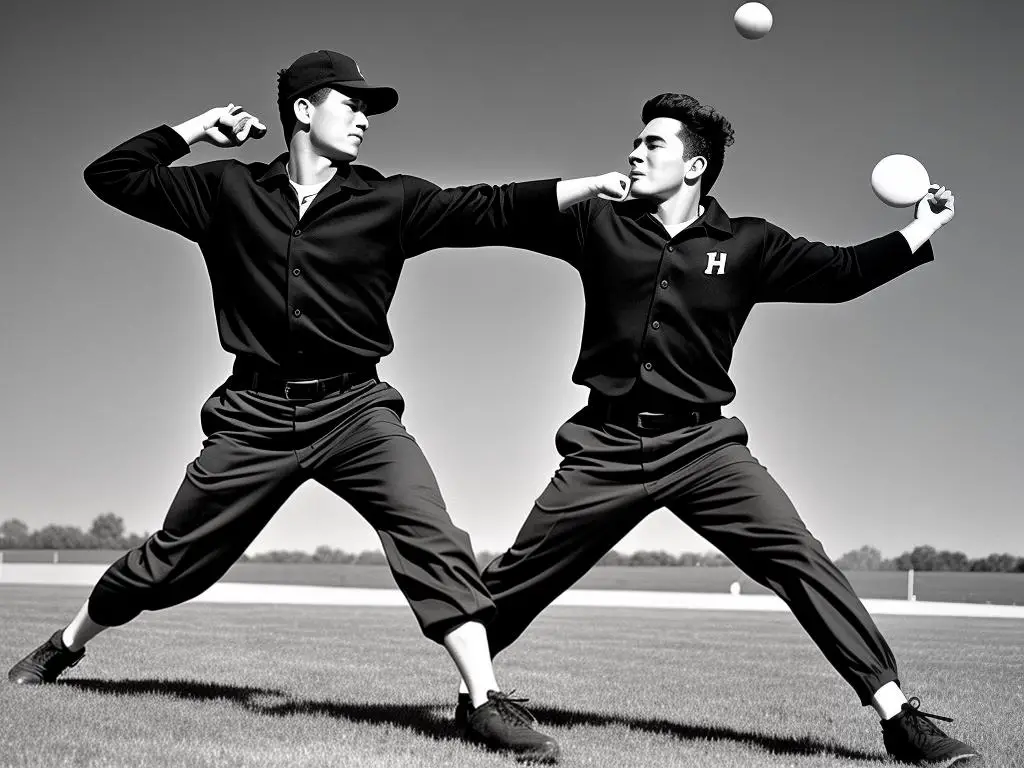Passing time with a game of horseshoes in your backyard on a sunny afternoon marks a classic staple of recreational enjoyment. But beyond its leisurely appeal, horseshoes is a game steeped in strategy, skills, and subtleties. An ideal blend of fun and competition, it demands an understanding of its intricacies, right from the fundamentals to the advanced tactics. In this discourse, we will delve into the intriguing world of horseshoes, beginning with the heart of its basics – the rules of the game, scoring, and the differing types of throws. Further, we will traverse through the realm of throwing techniques, discussing grips, stances, swings, releases, aims, and approaches that go into scoring a perfect ringer. Finally, we will explore the realm of game strategies, learning to adeptly manage our offensive and defensive plays, and adapting to the diverse playing styles of our opponents.
Understanding the Basics
Understanding the Basics of Horseshoes
Horseshoes is a classic backyard game that requires minimal equipment and can provide hours of fun. Here are some basics you need to know before you start playing.
1. The Essentials of Horseshoe
The game of horseshoes needs only a few items: four horseshoes, two stakes, a flat, level playing area, and two to four players. The stakes are traditionally made of metal and should stand about 14 – 15 inches above ground level once they are firmly planted. The stakes are typically placed 40 feet apart, a standard distance that may be reduced if younger or novice players are participating.
2. Game Rules and Setup
Horseshoes can be played between two people (singles) or between two teams of two people (doubles). In singles, each player tosses two horseshoes, while in doubles, each teammate throws one.
Each turn is called an inning. In an inning, each player or team gets to throw two horseshoes towards the stake in the other playing pit. After both players have thrown, the players walk to the other end, score the round, and then throw back from that end.
3. Scoring of the Game
Horseshoes utilizes a unique scoring system. If a horseshoe lands around a stake, it is called a ‘ringer’ and is usually worth 3 points. If it’s no more than a horseshoe’s width (about 6 inches) from the stake, it’s called a ‘point’, and it’s worth 1 point. A ‘leaner’, a horseshoe leaning on the stake, is also worth 1 point.
4. The Types of Throws
There are two major ways to throw a horseshoe: the ‘flip’ and the ‘turn’. Flip tosses involve holding onto one end of the shoe and flipping it end over end. Turn tosses are executed by swinging the shoe in a circular motion and letting it go, typically after one and a half turns. It’s entirely personal preference which throw you use.
5. Game Dynamics
In horseshoes, the distance between the stakes (40 feet) can greatly affect the difficulty of the game. The height of the stake (14 – 15 inches above ground) is also important. The angle either vertical or horizontal, which the horseshoe lands, can determine whether you get a point, a leaner, or a ringer.
With these instructions, the fundamental rules of the game should be clear. Remember that the most crucial aspect of playing horseshoes is to have fun. With practice, you’ll get better at scoring and might even score some ringers. Happy throwing!

Throwing Techniques
Getting Started with Horseshoe Throwing Techniques
Horseshoe pitching or throwing is a game that has enthralled hobbyists for decades. By understanding and mastering a few essential throwing techniques, you can significantly enhance your performance. The basic elements include grip, stance, swing, release, and aim. A trained approach towards these techniques can help you get better with accuracy.
Perfecting Your Grip and Stance
Your grip and stance are essential first steps to excel in horseshoe throwing. Hold the shoe such that one side of the horseshoe is held in your palm, and the other side is pointed towards your target. The grip should be firm but not too tight.
Your stance is another fundamental aspect to consider. You should stand at the foul line (roughly 27-37 feet from the target) with your feet shoulder-width apart. If you are right-handed, the left foot should be slightly in front; if you are left-handed, the right foot should be slightly forward.
Understanding the Swing and Release
The swing and release of the horseshoe require fluid motion and practice. Start by swinging the arm holding the shoe back and forth gently. Gradually increase the swing, bringing your arm up to about shoulder height at the end of the backswing.
As you swing forward, release the horseshoe at the same height as when you started your swing. This process requires a fair amount of practice to get the right timing and angle of release.
Aiming and Your Overall Approach
Aiming correctly is critical to success in horseshoe throwing. The objective is to toss the horseshoe so that it lands around the stake. This requires visualizing the path your horseshoe needs to take before you throw it.
Your overall approach should involve consistent practice and focus on mastering the basic techniques initially. As you get comfortable with these, you can start applying strategies, like trying different throwing styles or adjusting your aiming point based on your previous throws.
Continual Improvement and Practice
Like any sport, improving your horseshoe throwing technique requires regular practice. It’s essential to focus each session on different aspects of your technique. One day concentrate on your grip and stance, the next on your swing and release, and the third day on your aim and overall approach. Slowly but surely, through consistent practice, you’ll see significant improvements in your horseshoe throwing skills.

Game Strategies
Basic Understanding: The Strategy of Horseshoes
Horseshoes is a game that delights in its simplicity, both in terms of rules and physical requirements. It can be played one-on-one or in teams of two and the objective is to toss horseshoes at stakes in the ground, with points awarded for the closest throw and for ringers. As you delve deeper into the world of horseshoes, you’ll discover that underneath this straightforward structure lies an engaging dance of tactics, strategies, and keen observation.
The Art of the Toss: Scoring Points
In a game of horseshoes, the primary method of scoring points is to toss your horseshoes so they land closer to the stake than your opponent’s. A horseshoe that surrounds the stake, a feat called a “ringer”, scores three points while landing within a horseshoe’s length of the stake scores one point. This scoring mechanism lies at the heart of your game strategy.
Strategizing your Throws: Offensive Throws
One angle of strategy in horseshoes revolves around offensive throws. When you’re on the offensive, you’re looking to score ringers or get as close to the stake as possible. A well-executed offensive throw can change the tide of the game and apply pressure on your opponent to match your performance.
Building a Wall: Defensive Throws
Along with offensive throws, you also must master the art of defensive play. A well-placed defensive horseshoe can block your opponent’s path to the stake, forcing them to adjust their throw. The key to utilizing defensive throws effectively is observation. By understanding your opponent’s preferred throw style and usual landing spots, you can strategically position your horseshoes to disrupt their game.
Adapting to your Opponent: Tactical Play
Horseshoes is not a game set in stone. Rather, it is fluid and always changing, dependent not only on your own skill and strategy, but also on your opponent’s style. By observing your opponent, you can recognize patterns, predict throws, and continually adapt your game plan accordingly.
A player who throws with high-velocity, for instance, will often leave the area around the stake relatively open. In this case, you may want to increase your defensive strategy by blocking the stake. Alternatively, if your opponent usually throws in an arc and lands far from the stake, increasing your offensive play may be the better strategy.
Encapsulating your Strategy: The Effective Player
Horseshoes is a game of skill and strategy intertwined, where proper planning and game-time decision-making skills are crucial for success. It’s not just about scoring points, but also responding effectively to the moves of your opponent. By studying the game and playing repeatedly, you’ll develop a way of thinking that will lead to improved performance and, ultimately, more games won.

As we untangle the complexities involved in this pleasing pastime, it becomes evident that horseshoes is more than just a game; it is a fascinating blend of accuracy, strategy, and tactful thinking. A thorough understanding of its rules and throwing techniques forms the foundation of a successful player. Accompanied by a shrewd grasp of game strategies and the ability to adapt to varying playing styles ensures a formidable command over the field. Whether you aim to be a casual player enjoying a chilled afternoon throw-about or a serious enthusiast seeking to perfect your game, the knowledge we have amassed will serve as your trusted guide. And remember, above all else, the joy of a well-played game of horseshoes lies not just in the thrill of a winning ringer, but in the sheer pleasure of the game itself.
Frequently Asked Questions about Mastering Horseshoes Game
A: Horseshoes is a classic outdoor tossing game where players aim to throw horseshoes around a stake in the ground to score points.
A: In Horseshoes, players take turns throwing horseshoes from a designated distance towards a stake in the ground. Points are awarded based on the proximity of the horseshoe to the stake.
A: Horseshoes can be played with 2 or 4 players, making it a simple yet enjoyable game for friends and family.
A: Yes, Horseshoes is a game that can be enjoyed by players of all ages, making it a great outdoor activity for gatherings and picnics.
A: To play Horseshoes, you need horseshoes and two stakes (one for each player or team), as well as a flat and open space to set up the game.
A: Yes, Horseshoes can be played in backyards, parks, or any open area with enough space to set up the stakes and toss the horseshoes.
A: The duration of a game of Horseshoes can vary depending on the number of players and the agreed-upon points or rounds. On average, a game can last around 20 to 30 minutes.
A: Yes, mastering techniques such as the flip throw and the turn throw can improve accuracy and increase your chances of scoring points.
A: Yes, many communities have Horseshoes leagues and clubs that offer organized play, tournaments, and opportunities to socialize with other players.